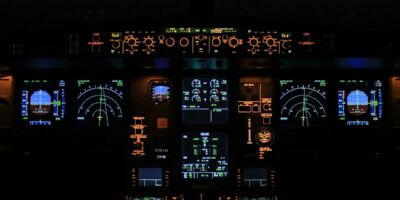Aircraft Wiring Harness
An aircraft wiring harness is a critical component in aviation. It connects various electrical systems and ensures efficient communication and functionality. Understanding its design, materials, and maintenance is essential for anyone involved in aircraft engineering and maintenance.

Components and Materials
Aircraft wiring harnesses consist of multiple wires, connectors, terminals, and protective coverings. The wires are typically made from copper or aluminum. Copper is widely used due to its excellent electrical conductivity. Aluminum, although less conductive, is lighter, which helps reduce the overall weight of the aircraft.
Connectors and terminals are crucial for joining wires and ensuring a secure electrical connection. Connectors are usually made from metal and plastic, while terminals often consist of metals like tin or silver. These materials are selected based on their resistance to corrosion and durability under extreme conditions.
Protective coverings safeguard the wires from environmental damage. These coverings include insulation made from materials like PTFE (polytetrafluoroethylene), polyimide, or silicone. These materials are chosen for their thermal stability, resistance to chemicals, and flexibility.
Design and Manufacturing
Designing an aircraft wiring harness requires careful planning. Engineers must consider the electrical load, routing pathways, and potential interference. They use specialized software to create detailed schematics and layout plans. This ensures that the harness fits within the aircraft’s structure and operates safely.
Manufacturing involves several stages, starting with the selection of materials. Each wire is cut to the required length and stripped of its initial insulation. The wires are then grouped into bundles based on their destination and function. These bundles are wrapped with additional protective layers before being fitted with connectors and terminals.
Quality control is a vital part of the manufacturing process. Each harness undergoes rigorous testing, including continuity checks, insulation resistance tests, and high-voltage tests. This ensures that it meets the stringent safety standards required in aviation.
Installation and Maintenance
Installing an aircraft wiring harness is a meticulous task. Technicians must follow the design schematics closely to ensure accurate routing. They use labels and color codes to identify wires and connectors, preventing errors during installation. Proper routing prevents interference and ensures ease of access for future maintenance.
Maintenance of wiring harnesses involves regular inspections and testing. Inspections often include visual checks for signs of wear, corrosion, or damage. Technicians may use specialized equipment to test the electrical integrity of the harness. Immediate repairs or replacements are made if any issues are detected to maintain the safety and functionality of the aircraft.
Challenges and Solutions
One challenge in aircraft wiring harnesses is dealing with electromagnetic interference (EMI). EMI can disrupt the performance of electronic systems. To combat this, engineers use shielding techniques, such as twisted pairs of wires and shielded cables. These methods help minimize the effects of EMI and ensure reliable communication between systems.
Another challenge is managing weight. Excessive weight can affect an aircraft’s performance and fuel efficiency. Using lighter materials like aluminum and optimizing the design can help reduce the weight of the wiring harness without compromising its functionality or safety.
Recent Advances
Advances in materials and technology have led to the development of more efficient and reliable wiring harnesses. New materials like high-performance polymers offer better thermal stability and durability. Improved connectors and terminals enhance the reliability of electrical connections.
Furthermore, advanced diagnostic tools and software allow for more precise testing and monitoring of wiring harnesses. These tools can detect potential issues early, enabling proactive maintenance and reducing the risk of unexpected failures.
Regulatory Standards
Aircraft wiring harnesses must comply with stringent regulatory standards. Organizations like the Federal Aviation Administration (FAA) and the European Union Aviation Safety Agency (EASA) set these standards. They cover aspects such as design, manufacturing, installation, and maintenance to ensure the highest levels of safety and reliability.
Compliance with these standards is mandatory for all aircraft wiring harnesses. Manufacturers and maintenance providers must adhere to these regulations to certify that their products meet the required safety criteria.
The Future of Aircraft Wiring Harnesses
As aviation technology continues to evolve, the role of wiring harnesses will become even more vital. With the rise of electric and hybrid-electric aircraft, the demand for efficient and lightweight wiring solutions will increase. Innovations in materials and design will drive the development of next-generation wiring harnesses, supporting the future of sustainable aviation.
The integration of advanced avionics and communication systems will also require more sophisticated wiring harnesses. These systems will need to handle higher data rates and more complex electrical loads. Engineers will continue to innovate to meet these demands, ensuring that wiring harnesses remain a critical component of modern aircraft.




Subscribe for Updates
Get the latest articles delivered to your inbox.
We respect your privacy. Unsubscribe anytime.